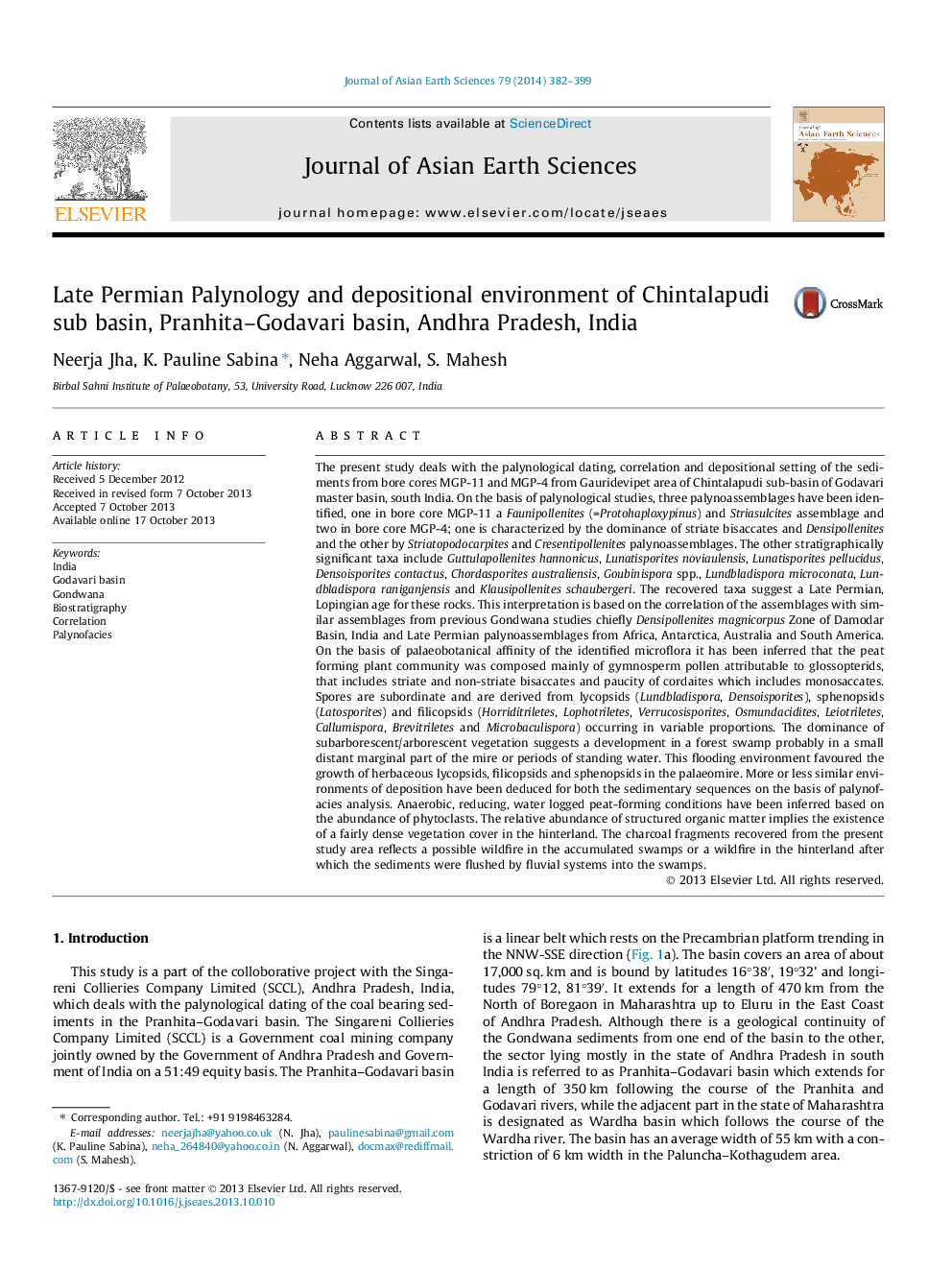| Article ID | Journal | Published Year | Pages | File Type |
|---|---|---|---|---|
| 4730915 | Journal of Asian Earth Sciences | 2014 | 18 Pages |
•Late Permian age has been assigned to the sediments based on palynological dating.•Correlation with Late Permian palynoflora from other Gondwanan continents.•Development in a forest swamp has been deduced by palaeobotanical affinities.•Anaerobic reducing water logged peat-forming conditions are inferred by palynofacies analysis.
The present study deals with the palynological dating, correlation and depositional setting of the sediments from bore cores MGP-11 and MGP-4 from Gauridevipet area of Chintalapudi sub-basin of Godavari master basin, south India. On the basis of palynological studies, three palynoassemblages have been identified, one in bore core MGP-11 a Faunipollenites (=Protohaploxypinus) and Striasulcites assemblage and two in bore core MGP-4; one is characterized by the dominance of striate bisaccates and Densipollenites and the other by Striatopodocarpites and Cresentipollenites palynoassemblages. The other stratigraphically significant taxa include Guttulapollenites hannonicus, Lunatisporites noviaulensis, Lunatisporites pellucidus, Densoisporites contactus, Chordasporites australiensis, Goubinispora spp., Lundbladispora microconata, Lundbladispora raniganjensis and Klausipollenites schaubergeri. The recovered taxa suggest a Late Permian, Lopingian age for these rocks. This interpretation is based on the correlation of the assemblages with similar assemblages from previous Gondwana studies chiefly Densipollenites magnicorpus Zone of Damodar Basin, India and Late Permian palynoassemblages from Africa, Antarctica, Australia and South America. On the basis of palaeobotanical affinity of the identified microflora it has been inferred that the peat forming plant community was composed mainly of gymnosperm pollen attributable to glossopterids, that includes striate and non-striate bisaccates and paucity of cordaites which includes monosaccates. Spores are subordinate and are derived from lycopsids (Lundbladispora, Densoisporites), sphenopsids (Latosporites) and filicopsids (Horriditriletes, Lophotriletes, Verrucosisporites, Osmundacidites, Leiotriletes, Callumispora, Brevitriletes and Microbaculispora) occurring in variable proportions. The dominance of subarborescent/arborescent vegetation suggests a development in a forest swamp probably in a small distant marginal part of the mire or periods of standing water. This flooding environment favoured the growth of herbaceous lycopsids, filicopsids and sphenopsids in the palaeomire. More or less similar environments of deposition have been deduced for both the sedimentary sequences on the basis of palynofacies analysis. Anaerobic, reducing, water logged peat-forming conditions have been inferred based on the abundance of phytoclasts. The relative abundance of structured organic matter implies the existence of a fairly dense vegetation cover in the hinterland. The charcoal fragments recovered from the present study area reflects a possible wildfire in the accumulated swamps or a wildfire in the hinterland after which the sediments were flushed by fluvial systems into the swamps.
